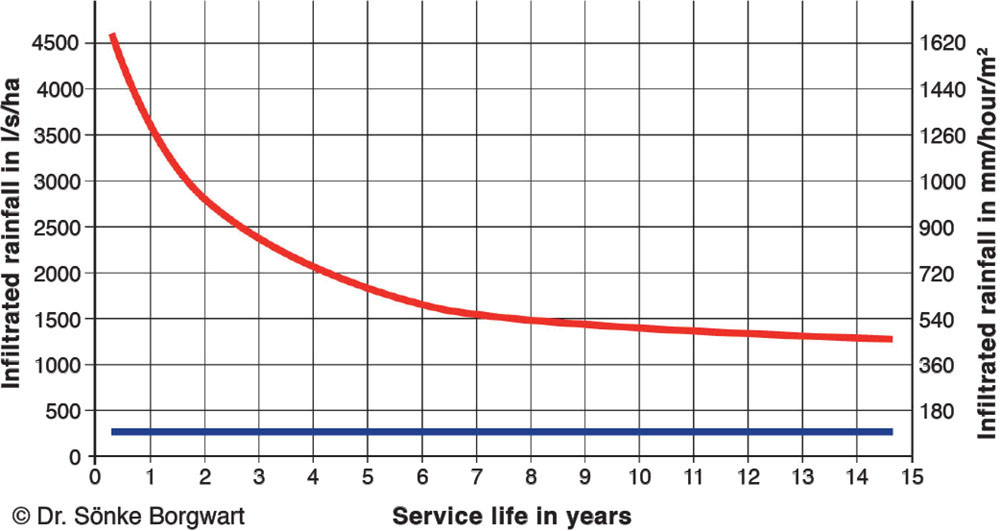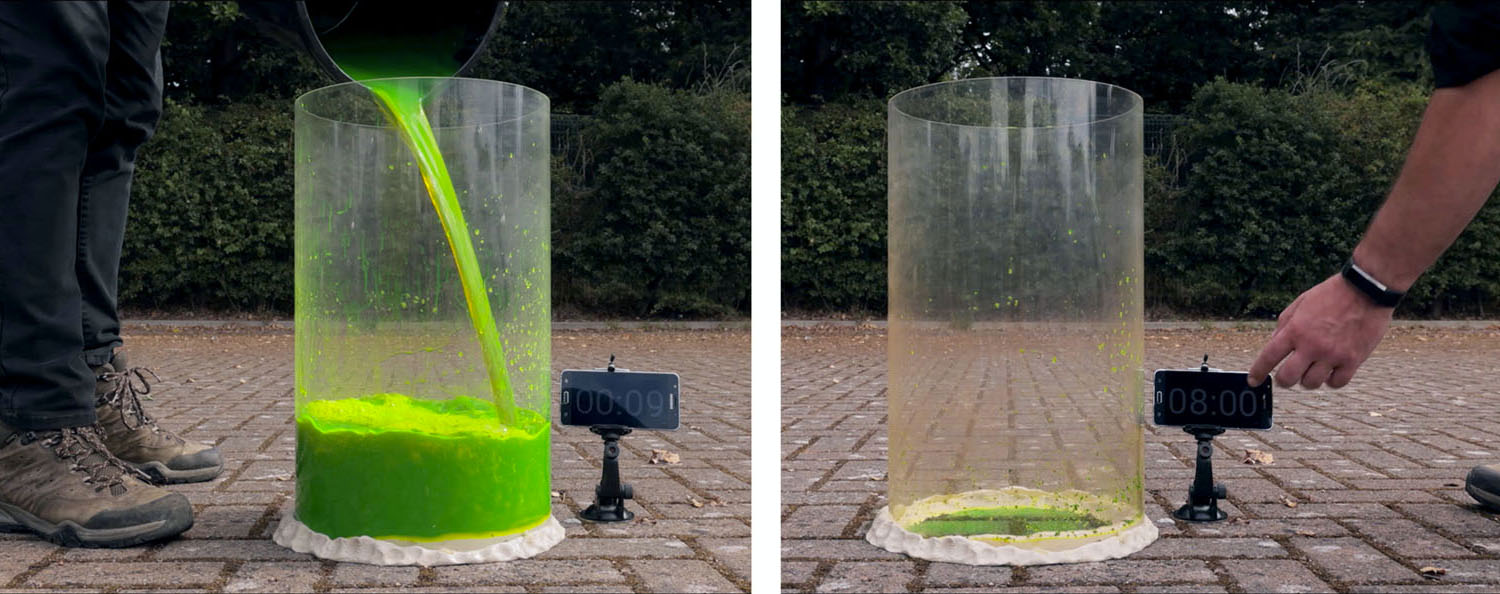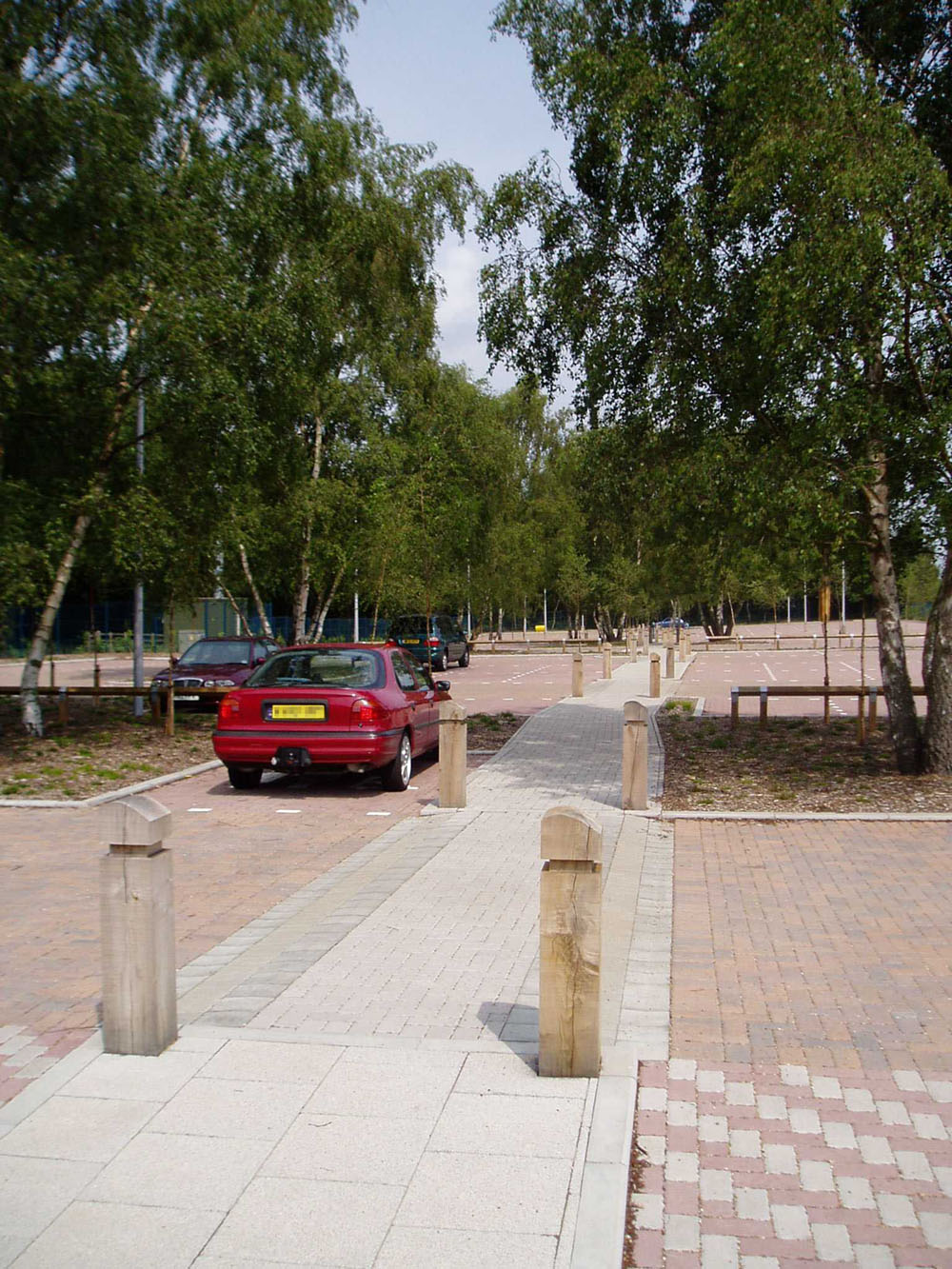Proving Permeable Paving
Recent trials of various, older concrete block permeable paving projects following long-term use back-up previous research, endorse current minimal maintenance recommendations and debunk misconceptions about clogging up of joints.

Concrete Block Permeable Paving (CBPP) technology has proven itself over successful use around the world since the mid-1980s. Two decades of experience in the UK has demonstrated its long-term performance with minimal, if any, maintenance. But one of the most persistent misconceptions about CBPP technology, impeding its uptake and adoption, is that – without maintenance – the joints quickly become clogged with debris and, within a short period of time, joints become impermeable preventing water from draining into the paving.
Permeable Paving in Practice
Over time, detritus and silt collects in the upper part of CBPP joint material between blocks, where a surface ‘crust’ (around 5-10mm deep) is formed, protecting the laying course and sub-base material but still allowing infiltration. Also, the performance of CBPP is not significantly affected by moss or weeds in the joints, or by leaves collecting on the surface. Even where localised blockages do occur, in a storm event excess water simply flows to more permeable, adjacent areas.
Previous research has demonstrated that the infiltration rate of CBPP will decrease due to this build-up in the jointing material, but then stabilise with age. Even after allowing for clogging, the long-term infiltration capability of permeable pavements will normally substantially exceed UK hydrological requirements – as summarised in the graph.

Latest Research
In order to better understand the effect trafficking, weathering and time have on CBPP systems, field tests were undertaken by an Interpave member on three projects installed 6-, 17- and 19-years ago respectively. To measure the permeability of these existing CBPP pavements, the trials used the American Standard ASTMC1781/C1781M method, demonstrated in a video here.
All of the CBPP sites tested, despite receiving no specific maintenance to improve permeability, still provide infiltration rates that would cope with any likely UK rainfall event. A full report on these trials can be downloaded here

Case Study and Video
One of the trial projects – Martlesham Park and Ride, Suffolk – is the subject of a video showing the trials and including an illuminating interview with the original designer about long-term performance, maintenance and the benefits of CBPP for trees. View case study video here.

Constructed in 2003, this large out-of-town car park receives regular daily trafficking from commuters and shoppers. Occasional sweeping is undertaken around the edge of the space to tidy up foliage from overhanging vegetation, but otherwise no specific maintenance has taken place. There is heavy moss in most joints and, towards the edge of the site, there are large amounts of loose debris from trees and shrubs. Nonetheless, the CBPP has delivered problem-free performance over 17 years.
An updated case study on the Martlesham project is available here.
Interpave Guidance
Reflecting the latest research and long-term experience in use, Interpave’s ‘Maintenance of Concrete Block Permeable Paving’ summarises current recommendations for the limited maintenance required for CBPP. Download here.
Correct design, detailing and construction are essential to the long-term performance of CBPP and minimising maintenance. Guidance is available in Interpave’s design and construction information: ‘Concrete Block Permeable Pavements’, edition 7, here.
